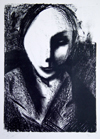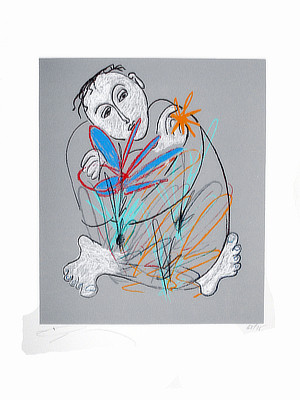Prints
by E.J. Gold
According to Norman R. Eppink in his amazing treatise on print making "101 Prints: The History and Techniques of Printmaking" there are 101 different types of prints. Some may say that he cut the line of distinction a little thin in places in order to make the title work -- 96 Prints doesn't have the same ring. Even so, there is definitely rich diversity in the field of print making.
E.J. Gold is a master of print making in many of its manifestations. Here we show a few.

Linoleum Block Prints
Linocut (linoleum block printing) is a printmaking technique, a variant of woodcut in which a sheet of linoleum mounted on a wooden block is used for the relief surface. A design is cut into the linoleum surface. The tool may be a sharp knife, V-shaped chisel, gouge, fork, sharpened spoon, or any weapon of mass artistic expression that happens to be available. The raised (uncarved) surface will receive and transfer ink during the printing process. This can be as background or foreground depending on the designs of the artist. The print may be pulled by hand or through a roller press.

Lithos
Lithography is a method of print making originally based on the hydrophobic nature of oil -- oil and water do not mix. Originally lithography used a stone (limestone) as the drawing surface. Now metal is by far the most common printing surface. Invented by an author and actor (Alois Senefelder) as a cheap method of publishing. Lithography can be used to print onto paper or cloth or parchment or any other suitable material.

Serigraphs
Serigraphy, or silk screening, is a meticulous process that bridges art and craft. The journey begins with a screen—once made of silk but now often crafted from synthetic materials—stretched tightly over a frame. Onto this screen, a stencil is applied, defining the areas through which ink will pass. Each color in a serigraph is applied separately, requiring a new stencil and a fresh screen. Layer by layer, ink is pressed through the screen with a squeegee, building up colors and textures with incredible precision.
